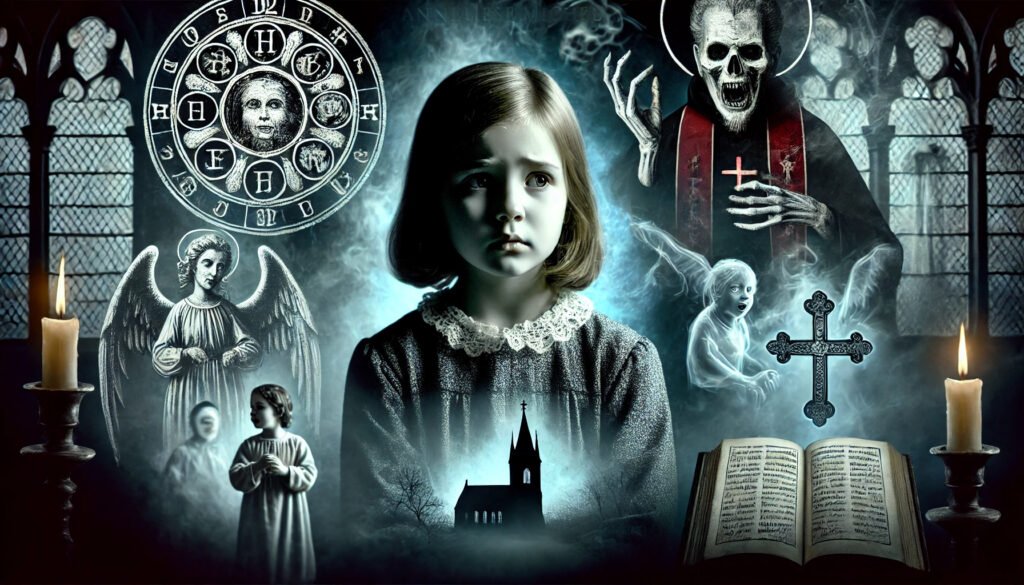Armed with this precarious information, a Hollywood movie, “The Exorcism of Emily Rose,” hit theaters in 2005, scary to the core and peddling its dark supposed depiction of demonic possession as based on true events. This movie actually took its idea from the genuine case of Anneliese Michel, a young girl in West Germany reportedly possessed by evil spirits and who underwent a series of exorcisms so famous that it has become one of the most well-known cases ever.
Anneliese Michel was born in 1952 to a very religious Catholic family. At 16 years of age, she had her first blackout, seizing ululations, and afterward, a deep trance condition that puzzled her and her family. Over the next couple of years, she went into these states more and more frequently, getting progressively worse, and they began to schedule her appointments with doctors. After a thorough examination, doctors and neurologists could find no sickness or cause behind her condition.

In 1970, Anneliese was finally diagnosed with temporal lobe epilepsy, which accounted for seizures and fits of hallucinations. It wasn’t long, though, that her symptoms spiraled out of control beyond what epilepsy could explain. Intense visions and disturbing voices plagued Anneliese as she performed odd behaviors: she would pray often on her knees, sometimes as many as 600 times a day; she would bark like a dog. She even ate spiders, coal, and later a bird. The parents, who by now were extremely desperate to find solutions for their daughter, finally turned to the Church.
The church launched a series of exorcisms upon her, believing that she was possessed by several demons that included Adolf Hitler, Roman Emperor Nero, Judas Iscariot, Cain, Lucifer, and a disgraced 16th-century priest named Valentin Fleischmann. These exorcisms took place over ten months while Anneliese’s condition continued to deteriorate. She eventually died due to malnutrition and dehydration—she only weighed 32 kilograms at her death.

This tragic end for Anneliese Michel also gave rise to a judicial inquiry into the matter, and her parents and the concerned priests were charged with the offense of negligent homicide. The court verdict Shaw, 2002 stated that Anneliese had been suffering from an amalgamation of temporal lobe epilepsy with anorexia nervosa and a hyper-religious personality disorder. It was estimated that her extremely religious upbringing, coupled with the fact that she had remained untreated for mental illnesses, led to her belief in demonic possession.
Understanding Dissociative Identity Disorder
Though quite extreme, the case of Anneliese stays in mind as a giddying blend of psychological distress and folkloristic thinking. By modern psychiatric standards, many of the recorded symptoms that describe demonic possession are characteristic of Dissociative Identity Disorder or DID. According to DSM-5, DID is diagnosed in an individual as “the presence of two or more distinct personality states.”
DID is normally designed as a coping mechanism against disaster situations of immense trauma, usually during childhood. In order to protect the individual from the traumatic memory, the brain dissociates or splits into different identities. These alters may have their names, ages, sex, and behaviors and are not aware of other alter’s existence.
One well-documented case is that of Kim Noble, a woman with over 100 different personalities. It is then that each alter has its own set of memories and characteristics, and the switching of alters may mean the host, as the primary identity is called, often loses time and has gaps in memory. Treatment for DID involves reintegration, facilitating communication between the different identities until they can eventually integrate into one fully functioning identity.
The Role of Trauma
Research in this field has established that more than 90% of DID victims have in one way or another reported incidents of child abuse. This is either by way of physical, emotional, or even sexual abuse. All these alter the wiring of the brain. What dissociation does is act as a defense mechanism where the individual mentally escapes this trauma by having other identities created so that these painful memories remain with those identities only popping up once in a while.
Anneliese Michel’s story is just one of many that ought to remind humankind about the importance of understanding and dealing with issues of mental health with compassion and scientific rigor. The misconception of mental conditions has led to various practices noxious to health, as in the case of Anneliese, where exorcisms led to medical abstention, which finally killed her.
Any such stigma against mental health must end in modern society, and seek out proper care for those in need. Stress, anxiety, depression, or any other psychological concern should be as usual as visiting the mental health expert as it is to seek the doctor’s help for some physical health condition.
Conclusion
The case of Anneliese Michel becomes a sober reminder of how misconceptions concerning mental health can be fatal. We can ward off such tragedies and make a difference in the lives of those affected with increased awareness and scientific research. In the future, we should raise awareness such that mental health matters are prioritized and those involved can ask for help freely.




